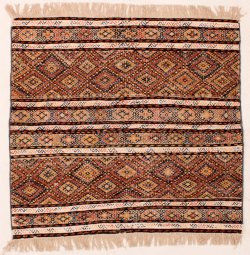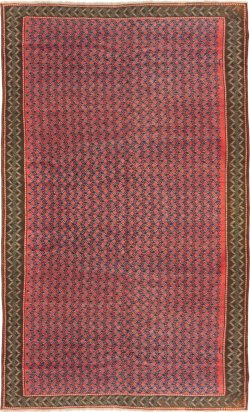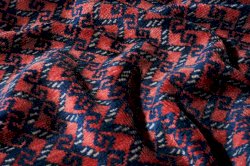Heriz rug
REF.: R22584
Heriz rug
| Price range: | €10.000,00 - €25.000,00 |
| Description: | Heriz rug |
| Dimensions: | L403xB300 |
| Origin: | North West Iran |
| Period: | 1880-1940 |
| Medium: | pile: wool / warp and weft: cotton |
| Technique: | Hand knotted |
Coulours may appear different on the website than in reality. All mentioned prices and sizes are indicative and not binding. Possibly some rugs that are still online, are not available anymore in the showroom.
The Heriz/Bakhshayesh region (Iranian province of Azerbaijan) owes its name and fame to the production of a series of small villages and hamlets at the foot of the Savalan massif in northeastern Iran.
In the 19th and 20th centuries, they brought high-end qualities to the market despite the humble origins of the artisans. Heriz carpets made before 1800 are not known.
The art of weaving carpets in this region developed very quickly in the 2nd half of the 19th century because merchants from the metropolis of Tabriz were looking for new opportunities.
The interest that had arisen in Europe and America for carpets around 1880 had grown enormously in a short space of time. There was a huge shortage of goods, and the merchants of Tabriz were now also going on a manhunt in the surrounding areas to follow the request.
No well-known names of studios, designers or " masters" emerged in Heriz, no drawn carpets and no "brands". Geometric drawings with powerful lines and colours were characteristic of the Heriz and Bakhshayesh. Exquisite wool, meticulous workmanship and durable materials ensured a worldwide reputation for this folk craft.
The population, as in most cities of the Iranian province of Azerbaijan, is predominantly Turkish. They speak the Turkish language and use the Turkish or symmetrical knot.
To this day, and although current production no longer has the look of yesteryear, people often (misleadingly) tend to give the name Heriz to all carpets from the region as well. However, the style and technique of each village are clearly recognisable. The name Heriz added value and simplified the description.
Atraf, Ahar, Mehrevan, Tsheshmezan, Ghioravan, Sharabian, Bilverdi and Karadja had to wait until the second half of the 20th century to be properly named.















